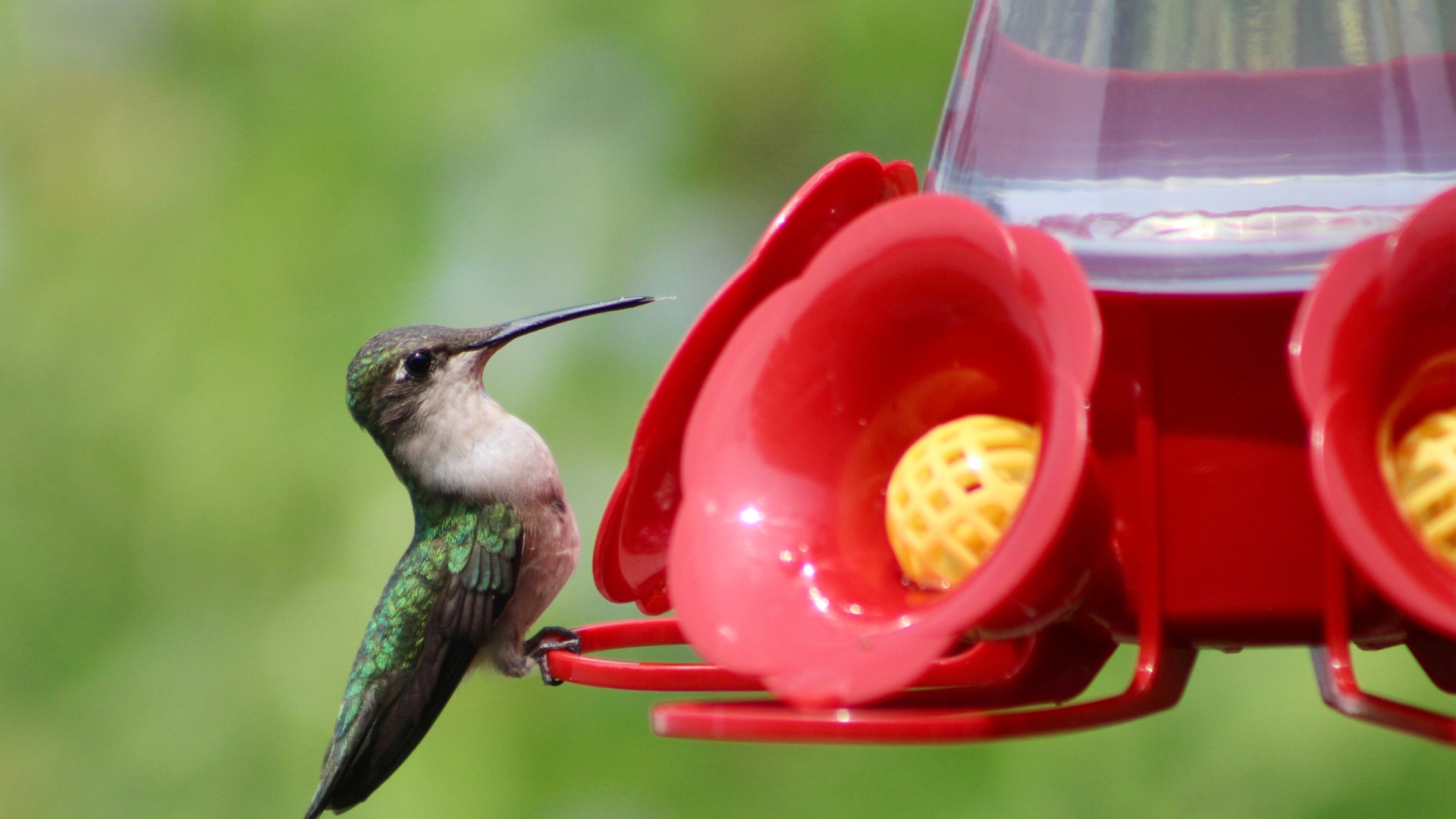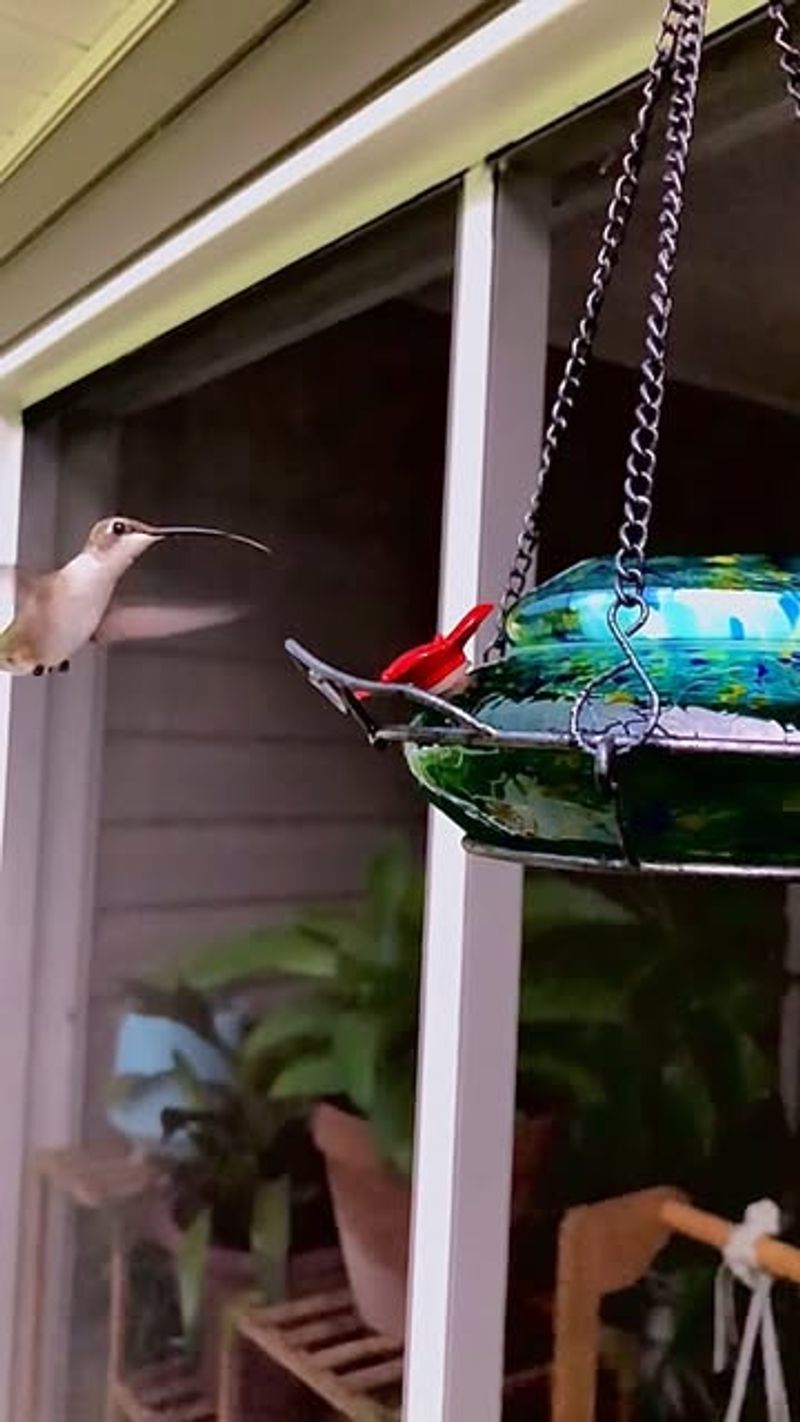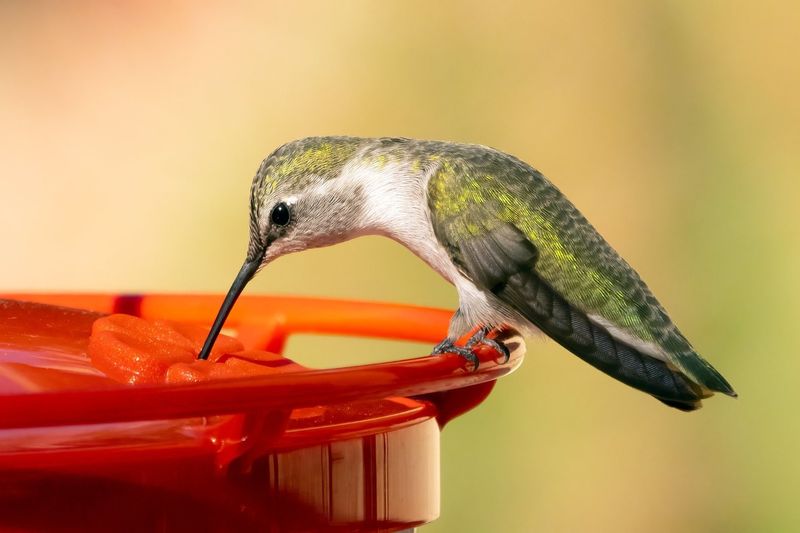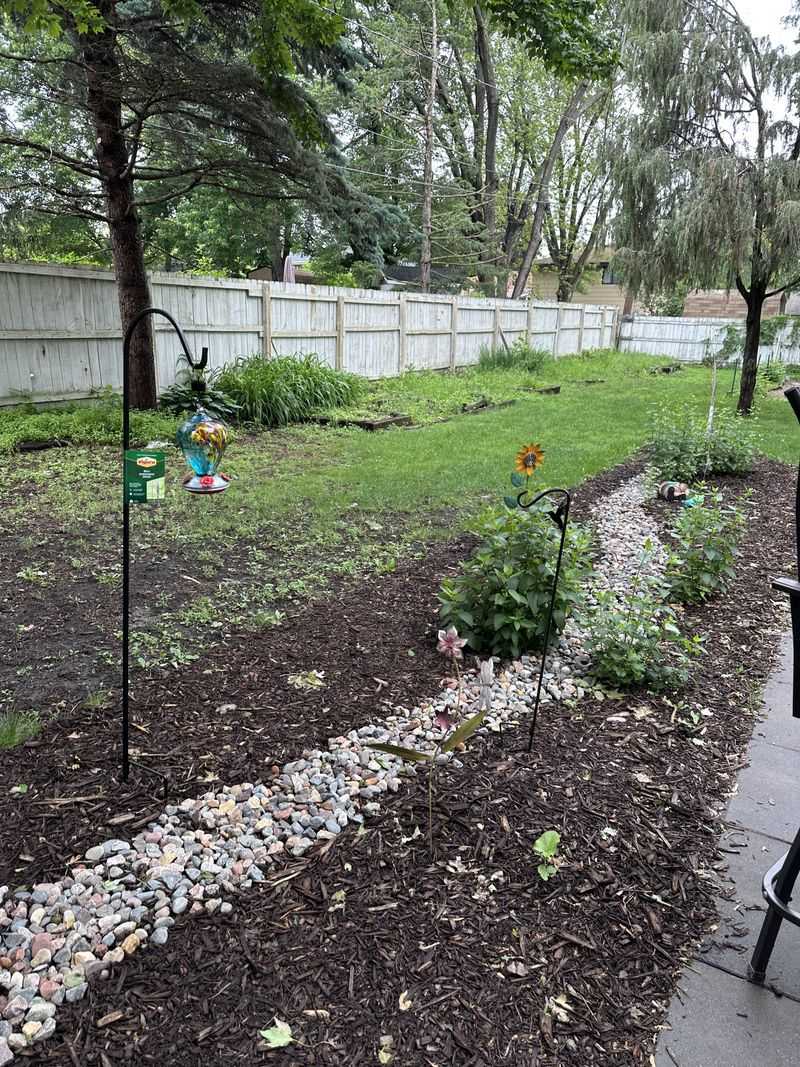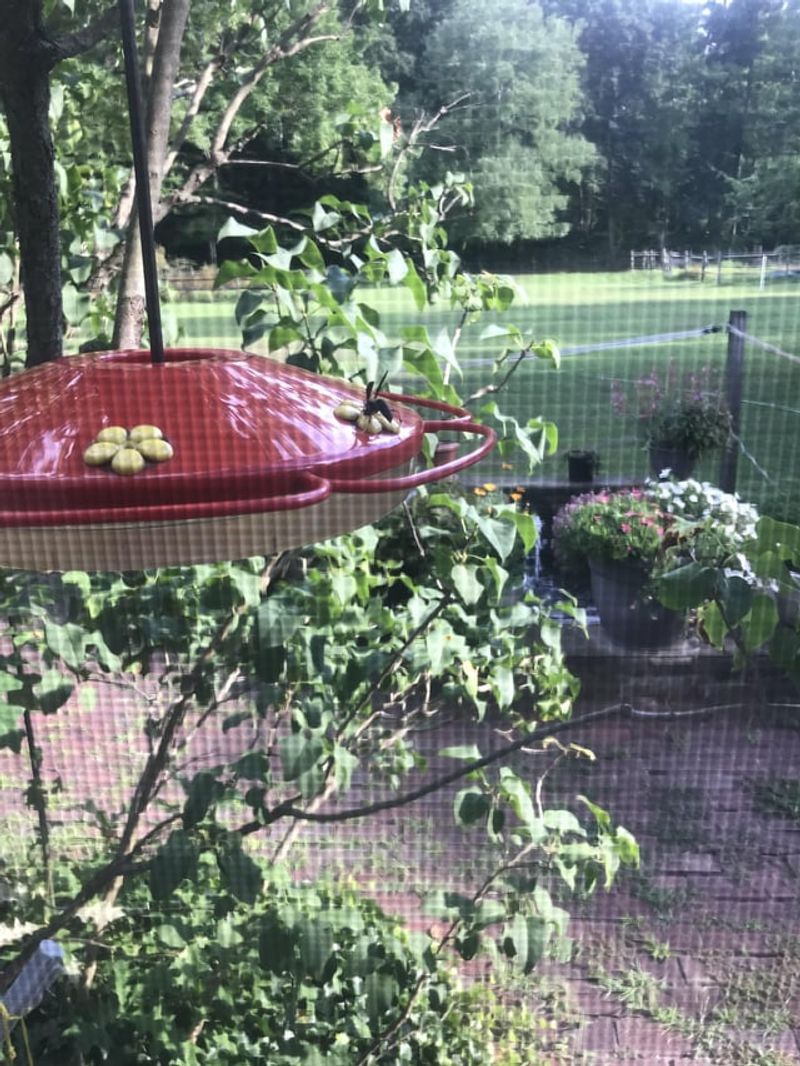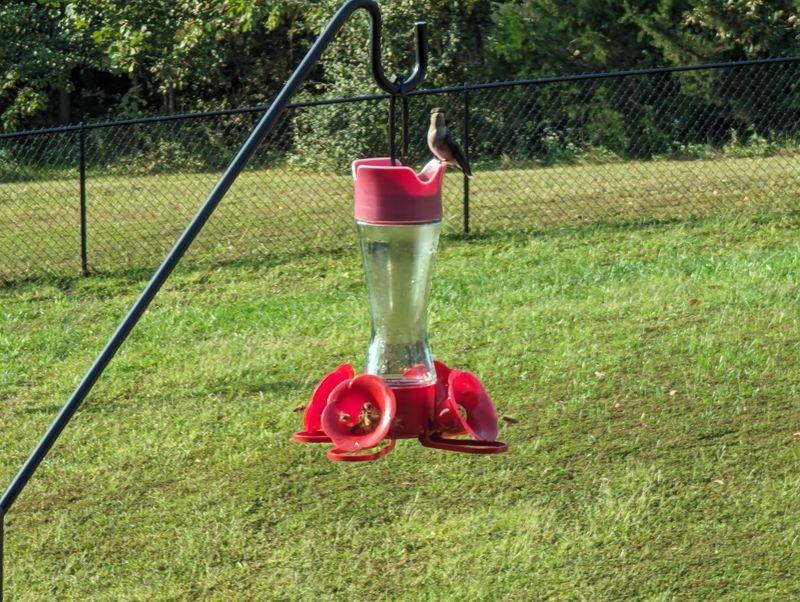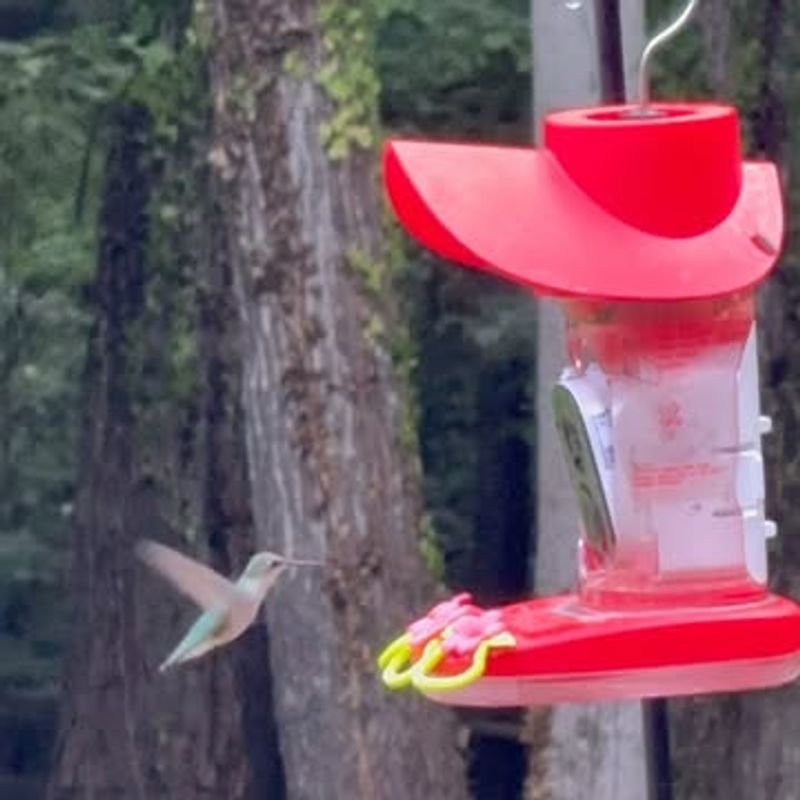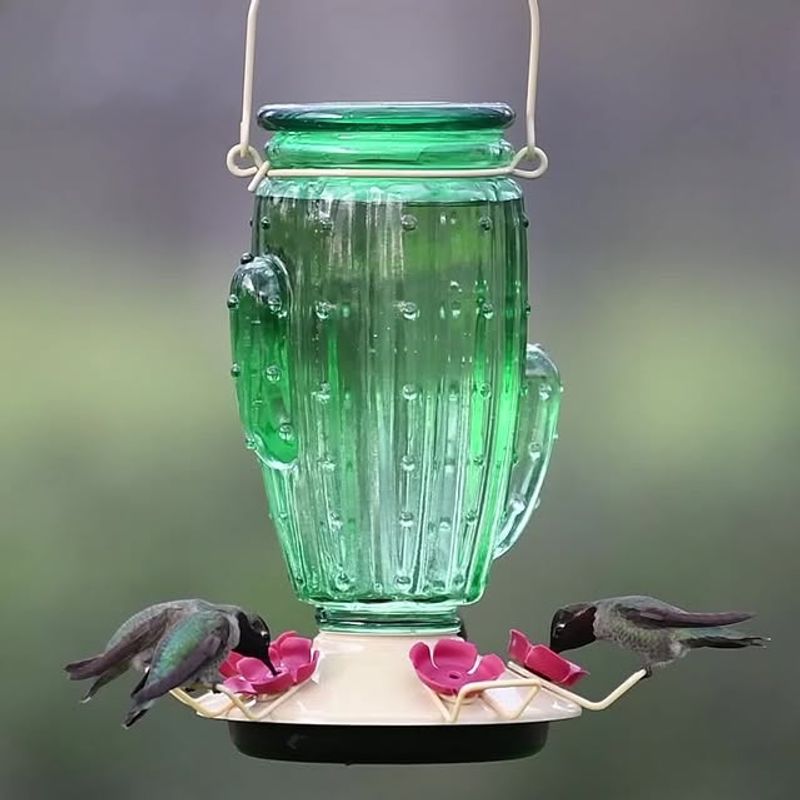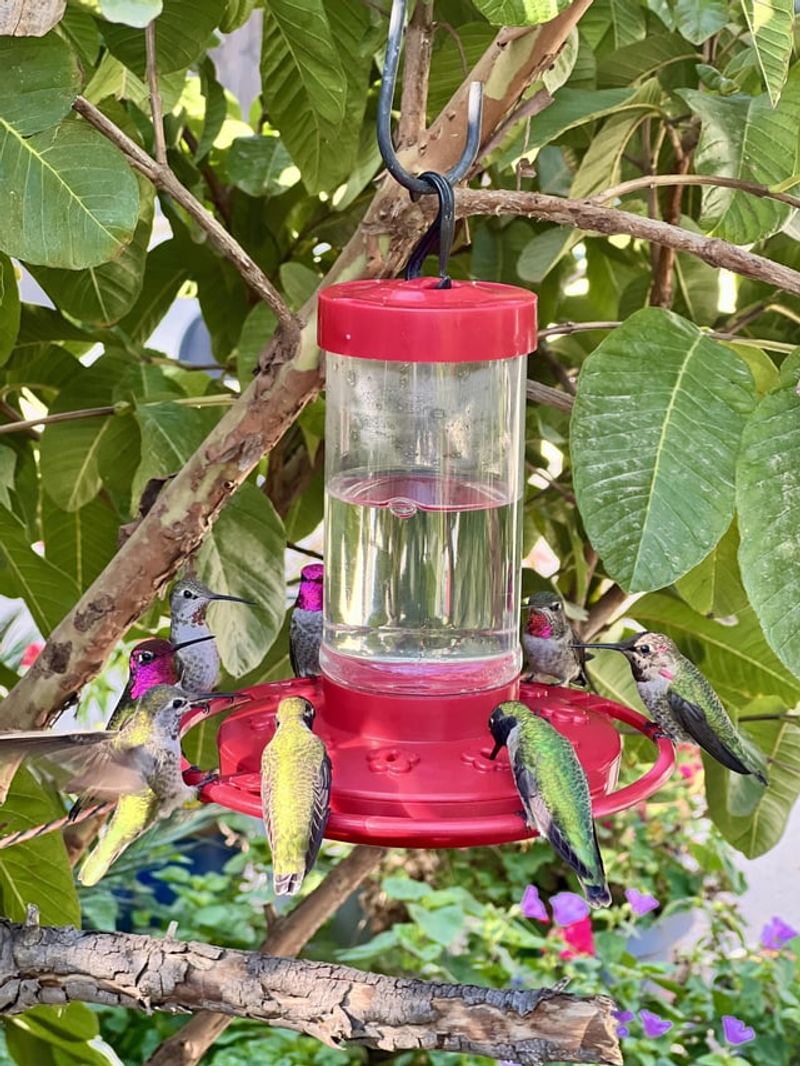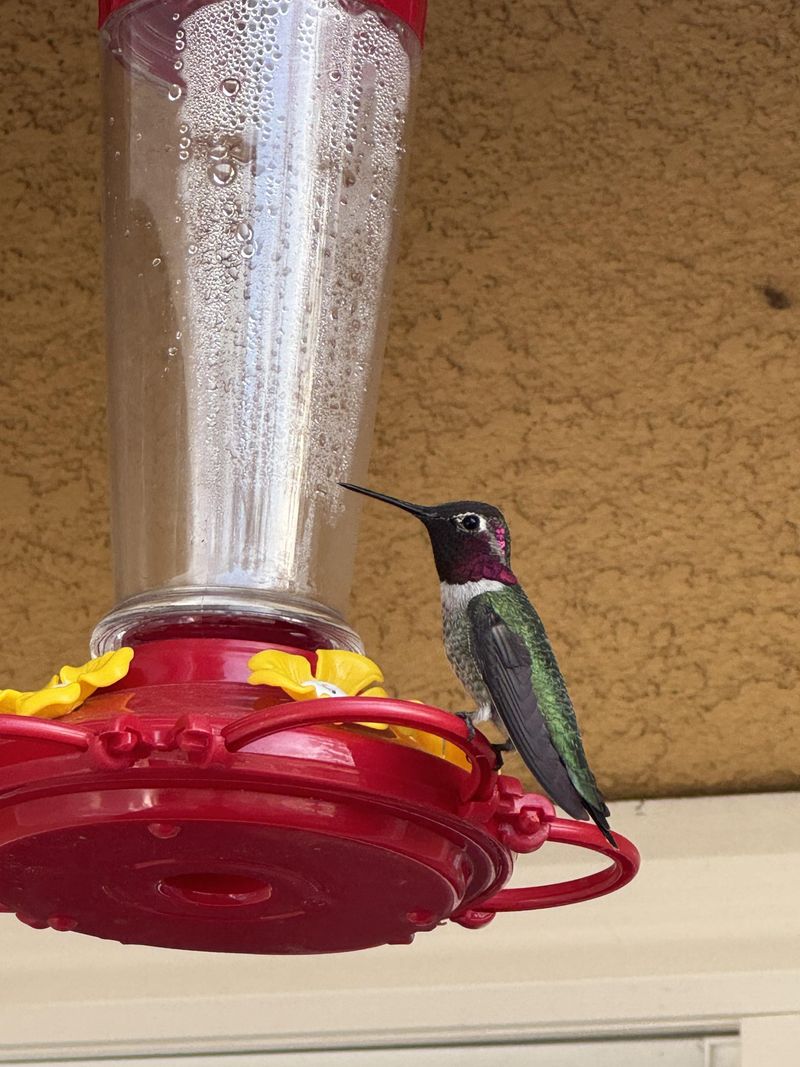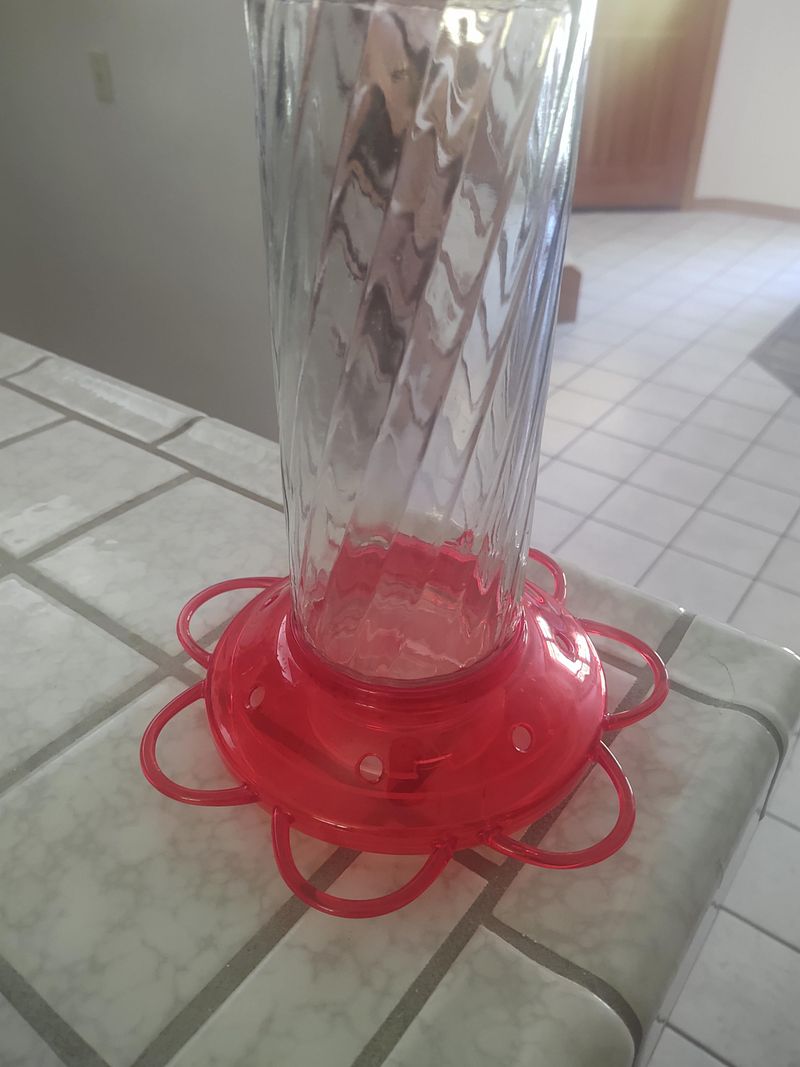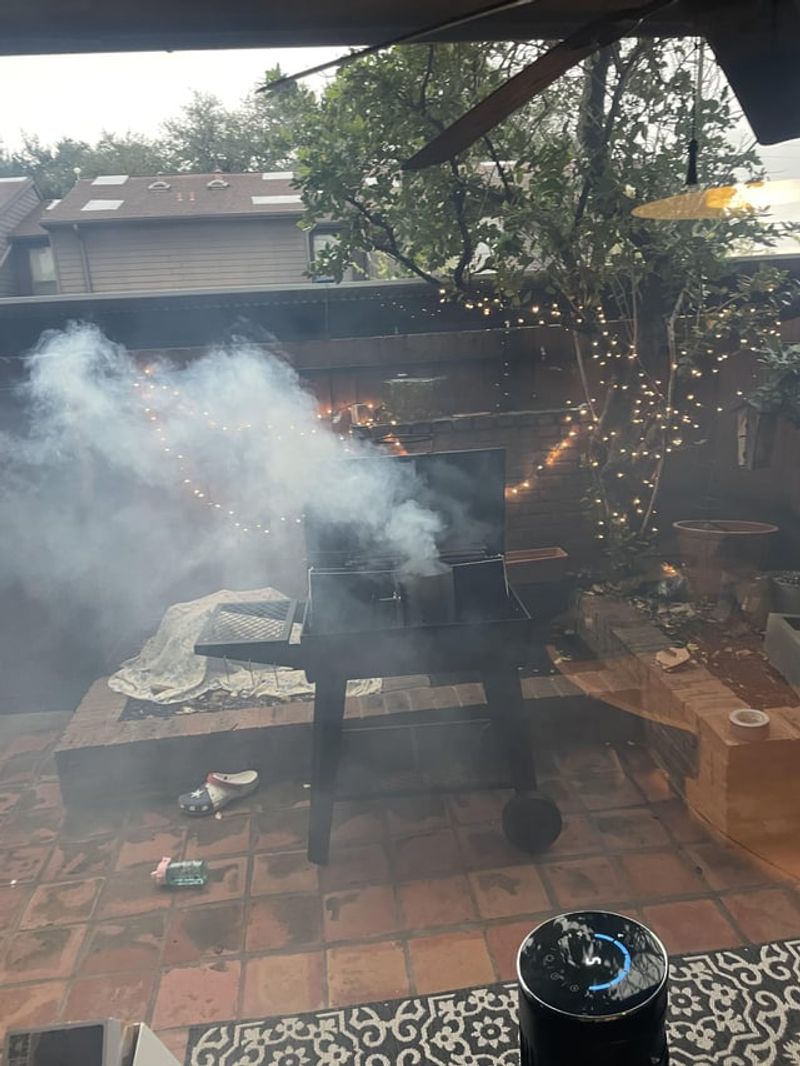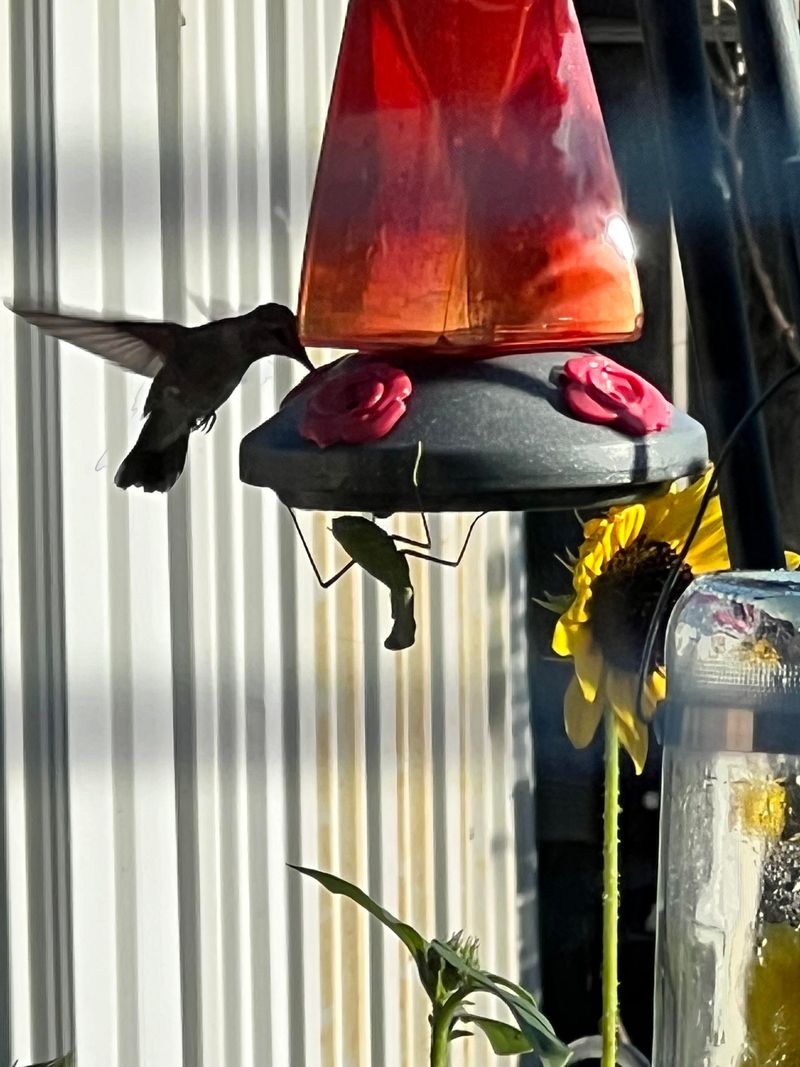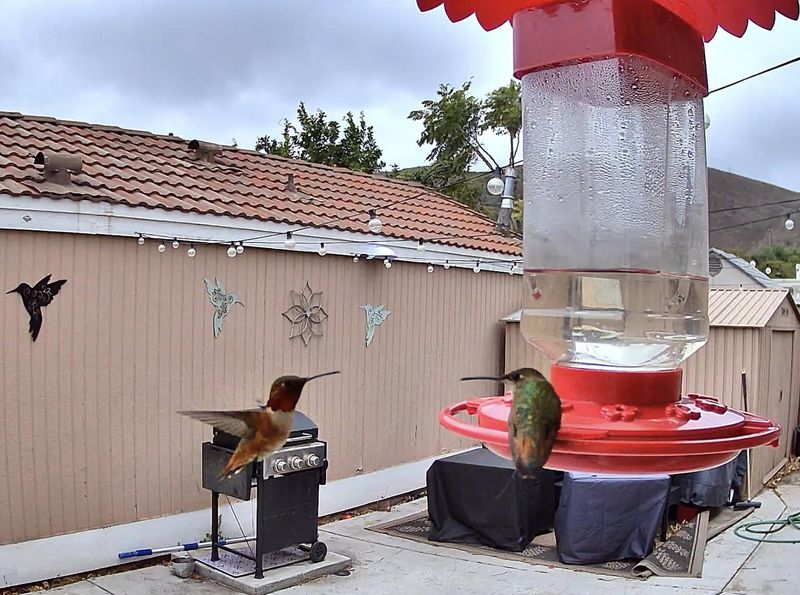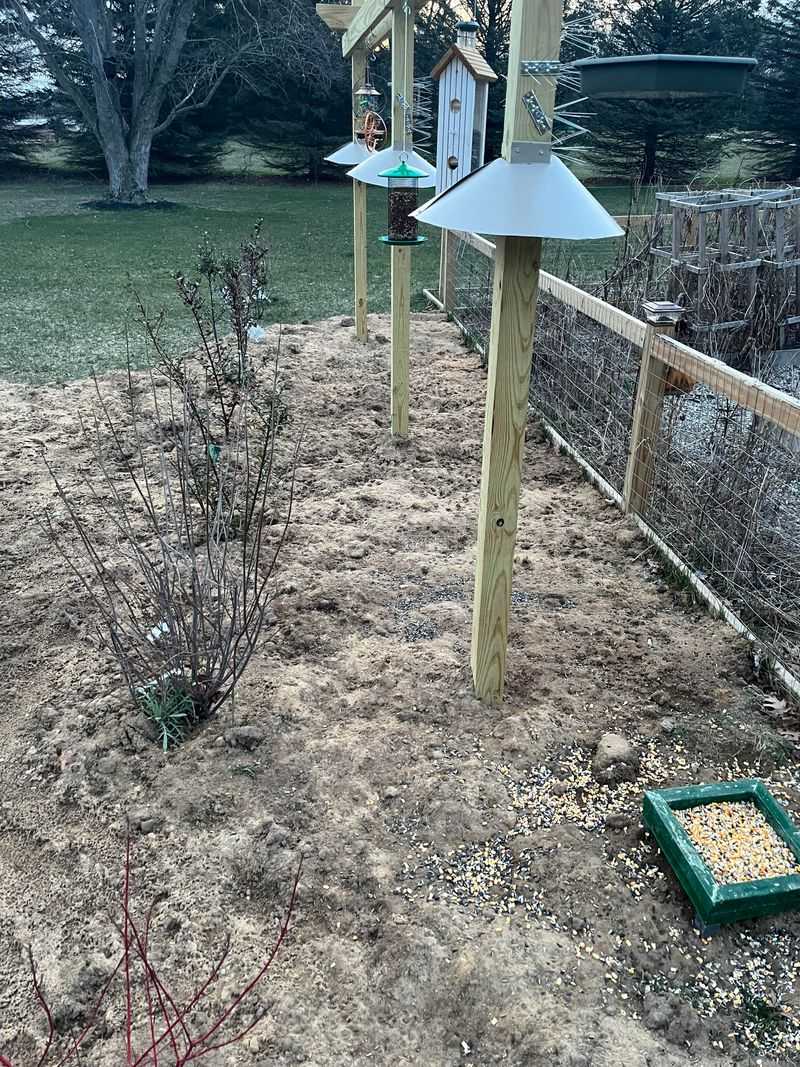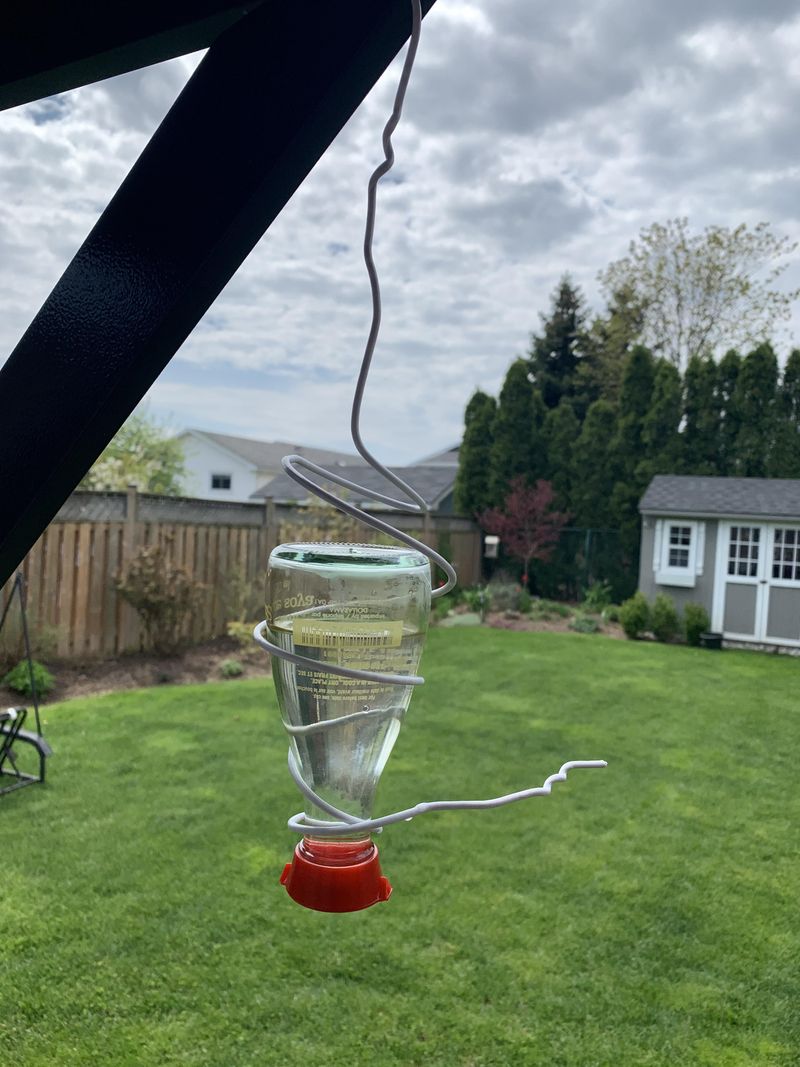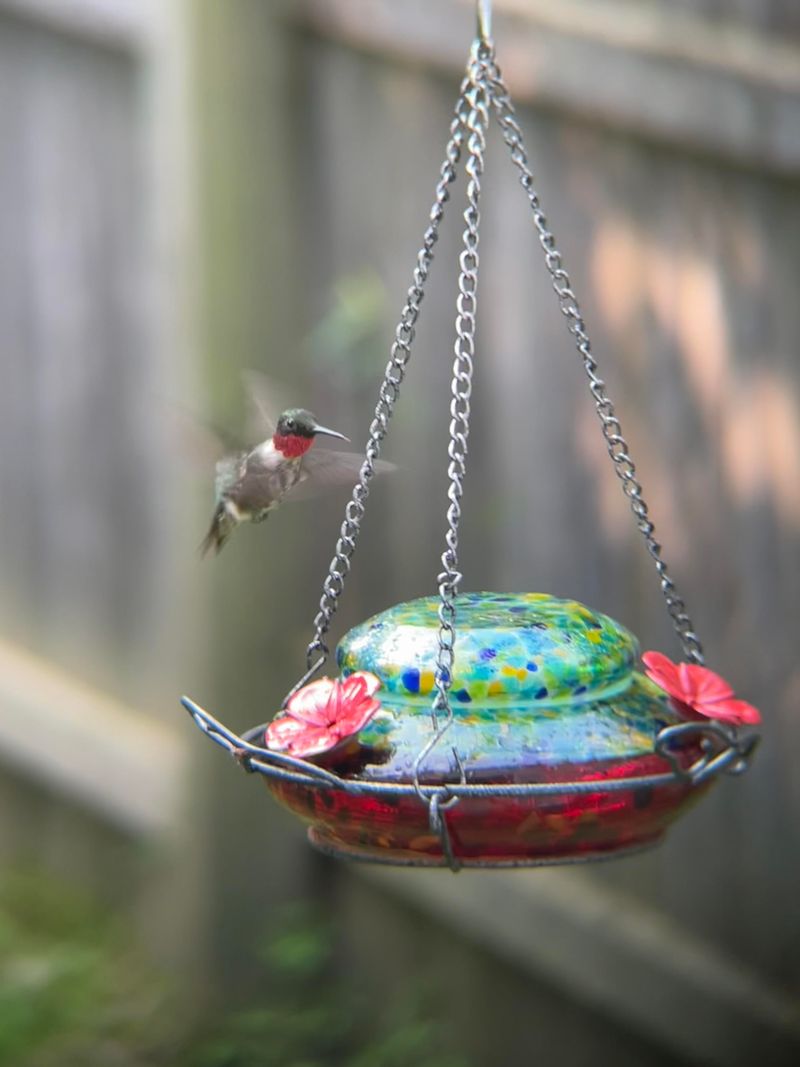I learned the hard way that not every spot is safe for a hummingbird feeder—one wrong move and those tiny visitors vanish. Hummingbirds may be bold, but they’re also picky and surprisingly easy to scare off.
Some spots put them in danger, while others just make it too tricky for them to find or enjoy the feeder. After a few flops and one feeder disaster (don’t ask), I figured out what works—and what definitely doesn’t.
Here are 16 spots you’ll want to skip if you actually want those little wings fluttering back.
1. Near Windows
Hanging feeders directly on or very close to windows creates a serious collision hazard. These tiny birds can reach speeds of 30 mph and can’t always distinguish reflective glass from open space.
Window strikes are among the leading causes of hummingbird injuries. Place feeders either within 3 feet of windows (too close for birds to build up dangerous speed) or more than 10 feet away (giving them room to recognize and avoid the glass).
2. In Direct Sunlight
The sugar solution in your feeder ferments quickly in hot, sunny spots. Fermented nectar can cause fatal fungal infections in a hummingbird’s tongue and make them seriously ill.
The heat also accelerates mold growth, another deadly hazard. Find a location with morning sun but afternoon shade to keep your nectar fresh longer. Your tiny visitors will appreciate the cool, clean dining spot during hot summer days.
3. Near Cat Lounging Areas
Cats are natural predators with lightning-fast reflexes. Placing feeders where cats lounge or hunt creates a deadly trap for visiting hummingbirds, who become completely focused on feeding.
Even well-fed house cats retain strong hunting instincts. Keep feeders at least 10-15 feet from the ground and away from structures cats might use to launch ambushes. Remember that hummingbirds hover while feeding, making them particularly vulnerable to pouncing predators.
4. Close To Insect Nests
Wasps, hornets, and bees are attracted to the sweet nectar in hummingbird feeders. Hanging your feeder near their nests invites territorial battles that hummingbirds cannot win against stinging insects.
These insects can take over feeders completely, driving birds away. They may also contaminate the nectar. Check your planned hanging spot carefully for insect activity before installing your feeder, especially under eaves or near woodpiles where nests often hide.
5. Near Bird Baths
While bird baths are wonderful for your garden, placing feeders directly above them creates problems. Dripping nectar contaminates the water below, creating a breeding ground for harmful bacteria and attracting unwanted pests.
Hummingbirds also prefer some privacy while feeding. Larger birds visiting the bath can intimidate these tiny flyers. Keep feeders and baths separated by at least 10 feet to create distinct zones for different activities in your bird-friendly yard.
6. In High Wind Areas
Hummingbirds weigh less than a nickel and struggle to feed from wildly swinging feeders. Hanging feeders in areas exposed to strong winds makes it nearly impossible for them to perch and drink safely.
Wind also increases nectar evaporation, changing the sugar concentration to potentially harmful levels. Choose a sheltered spot near shrubs or on the lee side of your house. The birds will appreciate the calm dining experience and the nearby cover for quick retreats.
7. Far From Natural Cover
Hummingbirds are prey for larger birds like hawks and need quick escape routes. Hanging feeders in open areas without nearby trees or shrubs leaves them feeling exposed and vulnerable during feeding.
Natural cover provides essential resting spots and protection. Position feeders about 10-15 feet from bushes or trees where hummingbirds can perch between feeding sessions and retreat quickly if threatened. This natural security system will keep them coming back regularly.
8. Near Pesticide-Treated Areas
Chemical pesticides don’t just kill unwanted bugs – they can poison hummingbirds too. These tiny birds have extremely fast metabolisms and can quickly absorb toxins from contaminated nectar or insects that have contacted chemicals.
Their size makes them especially vulnerable to even small amounts of pesticides. Keep feeders far from gardens, lawns, or plants that receive chemical treatments. Creating a pesticide-free zone around your feeding station protects these delicate visitors from harmful exposure.
9. Too Close To Other Feeders
Male hummingbirds are fiercely territorial and will aggressively defend feeding areas. Placing multiple feeders too close together creates constant battles, preventing most birds from actually feeding.
Dominant males may guard several close feeders, limiting access for females and juveniles. Space feeders at least 10-15 feet apart or position them where they can’t be seen from one another. This arrangement creates multiple territories and allows more birds to feed peacefully.
10. Above Hard Surfaces
Accidents happen, even to experienced hummingbird watchers. Hanging feeders over concrete patios, stone walkways, or decks creates danger if the feeder falls. Broken glass and spilled nectar create hazards for birds and people.
The hard surfaces also reflect heat upward, warming the nectar faster. Choose spots above soil or plants that can absorb spills naturally. This provides softer landing if the feeder falls and helps maintain cooler nectar temperatures during hot weather.
11. Near Barbecue Grills
The smoke, fumes, and sudden heat from barbecues create a dangerous environment for hummingbirds. Their tiny respiratory systems are easily irritated by smoke particles, and the unpredictable flames can singe feathers if birds dart too close.
The cooking area’s busy human activity also creates stress for these naturally cautious birds. Keep feeders well away from outdoor cooking spaces to create a peaceful dining area. Your backyard barbecues and bird watching can coexist with proper separation.
12. On Flimsy Plant Hooks
Those decorative thin metal plant hangers might look pretty, but they rarely support hummingbird feeders properly. Filled feeders are surprisingly heavy, especially glass models that can weigh several pounds when full.
Bent or broken hangers dump sticky nectar everywhere and can injure birds. Invest in sturdy, weather-resistant hooks designed specifically for bird feeders. Look for thick gauge metal with powder coating that won’t rust or weaken after exposure to the elements.
13. Near Loud Speakers
Hummingbirds have excellent hearing and are easily startled by sudden loud noises. Hanging feeders near outdoor speakers, home theater windows, or other sources of unpredictable sound creates a stressful environment.
These sensitive birds may abandon noisy feeding spots entirely. Choose peaceful locations away from entertainment areas where birds can feed without being bombarded by sound. The quieter setting will attract more visitors and allow you to observe their natural behaviors.
14. Behind Dense Foliage
While some cover is good, completely hiding feeders behind thick bushes or dense foliage prevents hummingbirds from finding them. These tiny birds locate food primarily by sight, not smell.
Hidden feeders also make it harder for you to monitor nectar levels and cleanliness. Position feeders where they’re visible from multiple approaches with some nearby cover for security. This balance helps birds spot the food source easily while still having protective perches available.
15. Near Reflective Surfaces
Mirrors, polished metal art, or decorative gazing balls create confusing reflections that disorient hummingbirds. These birds often can’t distinguish between real spaces and reflections, leading to exhausting defensive behaviors against “intruder” birds.
Reflective surfaces can also create dangerous hot spots that overheat nectar. Keep feeders away from garden mirrors, metal sculptures, and other highly reflective decorations. This simple adjustment prevents unnecessary stress and confusion for your tiny visitors.
16. In Drafty Corridors
Narrow passages between buildings or fences create wind tunnels that make feeding difficult for lightweight hummingbirds. These natural corridors funnel and amplify even gentle breezes into stronger currents that can blow birds off course.
The constant air movement also causes excessive nectar evaporation. Avoid hanging feeders in breezeways, narrow side yards, or between structures where wind concentrates. Look instead for protected nooks with open approach paths that allow easy access without fighting air currents.

